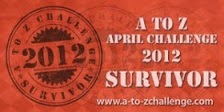
Mongoose Traveller Book 6: Scoundrel
By Gareth Hanrahan
Taking the Rogue and Drifter career paths from the Mongoose Traveller Core rules, this supplement expands them in a similar fashion to what has been done with other careers in previous books in this series. Also covered are Barbarians and Belters, two other marginalized groups.
Career paths for Scoundrels can be:
Intruder: which divides into Hacker, Burglar and Faceman (Facebeing?).
Smuggler: which includes Blockade Runner, Bootlegger, and Smuggler Crew.
Organised Criminal: Assassin, Enforcer, or Co-ordinator.
Pirate: Corsair, Boarder, or Jumpcusser.
Scavenger: Wrecker, Salvage Expert, or Tombrobber
Wanderer: Hitchhiker, Vagabond, or Bandit
Barbarian: Warrior, Tribesman, Shaman.
Imprisonment can be an occupational hazard for a Scoundrel, particularly during Character generation. A nice little metagame about Incarceration features just after the chargen section and can see your Scoundrel put away for up to 4 terms, especially if the Scoundrel’s lawyer isn’t much use, and the DMs are against you! Adventure 2: Prison Planet apparently has a Prison skill section that one’s character can use while inside or alternatively, there is a Prison Skills table attached to the Incarceration section to ensure that all is not completely lost while the character is doing time.
Criminal organisations are examined from a game point of view, and some of the concepts used to develop Intelligence agencies in Book 5: Agent feature in the fleshing out of such organisations, particularly the concept of Trust. The more Trusted a criminal is within his or her organisation, the more likely he or she will receive aid and assistance in performing heists or being extricated from a sticky legal situation. Of course, membership of such an organisation can be a source of future adventure hooks, particularly if the character thinks he or she has ‘left that life behind’. Several sample Organisations, ranging from the criminal, through the Political to the Religious, are presented to demonstrate how such organisations can be detailed for one’s own campaign
Piracy is looked at in some depth and both the pro and con arguments concerning piracy, particularly in a Traveller setting, are presented, including the fact that the practicalities of space piracy have been a long-running debate amongst Traveller fans. While the writer seems to needlessly split pirates into specialities (and some pretty artificial specialities at that), there is a nice reminder of one of Science Fiction’s more enduring pirate types, the raider or Star Viking.
There’s a nice little ship encounter table for pirates hunting prey near a main world, and a modified table for pirates working the Belt or outsystem. A pirate attack on merchant shipping is broken down into a series of tasks rolls which allows the process to be metagamed or played out in detail as required, and there are sections on Pirate Hunters, Pirate Bounties, and how to factor Pirate Loot.
The Intrusion section describes how a heist can be broken down into a series of skill rolls, allowing several jobs to be run in a session. Alternatively, the task rolls can be expanded upwards again as part of a roleplaying session. Helpfully, various security features for various tech levels are also considered as part of fitting out the target of the heist. Computer Hacking and how this works with the Traveller Core computer rules is also covered in some detail and a ‘sample target’ is described in sufficient detail to be lifted wholesale and dropped into a session.
The mechanics of smuggling are considered, including suggested levels of security checks at starports, and how a successful smuggler might go about subverting them. This section also includes several small scenario ideas that both describe a situation and then put several twists on it.
And then finally there’s a section on fencing illegal goods that, much in the way that the trade tables work, allow various DMs to influence the final price that the criminal gets for the loot.
An extensive equipment section, featuring a variety of clever little gadgets, leads into the starship section which features 11 ship designs, with floor plans, for pirates, belters and scavengers, their prey, and those who seek to bring down the villains.
Small sections on Belt mining, odd jobs for Drifters, Scavengers, gambling and con games, and Barbarians round out the book.
When I started to write this review, I must confess that I wasn’t particularly enthusiastic. But going back through the book again, I began to realise that there were quite a lot of very good ideas in here. Little things, like how much a pirate might make from a looted ship, or how to work out a criminal’s standing within an Organised Crime Group and what level of support that organisation might consider granting to that member, are just so useful when the GM is trying to be consistent, yet provide a challenge without stacking the deck against the player.
I do find some of the career path subdivisions baffling in their terminology and wonder if the writers have got themselves locked into a template that doesn’t always quite fit. Though having said that, the career path names can sometimes be quite evocative. And once you start thinking in that direction, they can be a good aid in working out the psychological worldview of the character.
Over all, I think Scoundrel is a good book, and one I intend to buy in hard copy when the opportunity presents itself.


































.png)









No comments:
Post a Comment